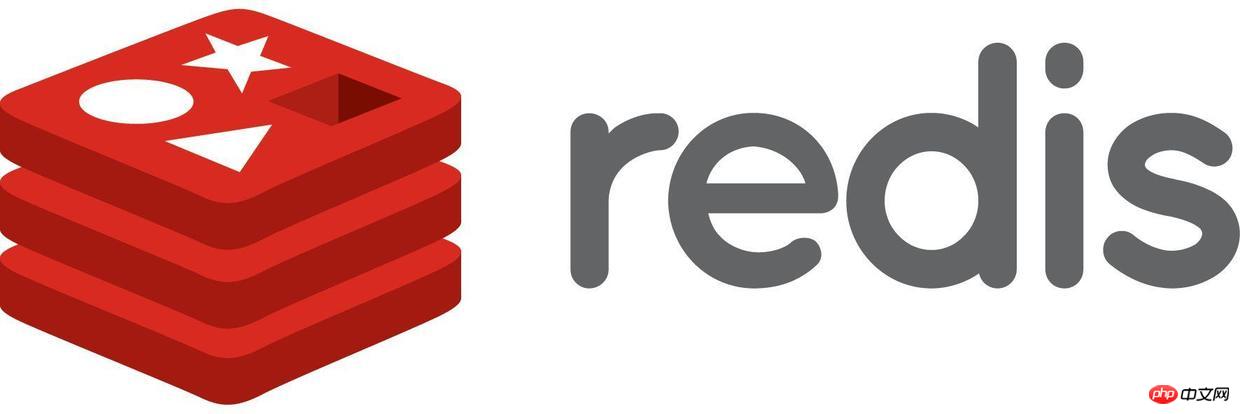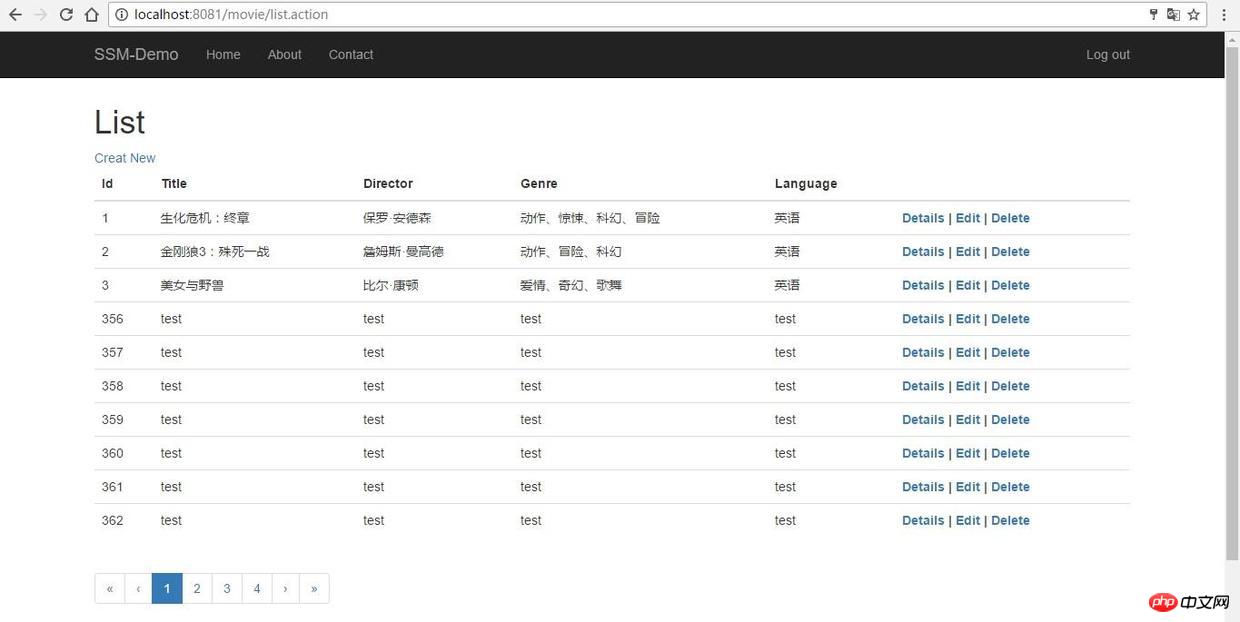Java中關於SSM之整合Redis的詳解

Redis安裝與使用
第一步當然是安裝Redis,這裡以Windows上的安裝為例。
先下載Redis,可以選擇msi或zip套件安裝方式
zip方式需開啟cmd窗口,在解壓縮後的目錄下執行
redis-server redis.windows.conf啟動Redis#採用msi方式安裝後Redis預設啟動,不需要進行任何設定
可以在redis.windows.conf檔案中修改Redis連接埠號碼、密碼等配置,修改完成後使用
redis-server redis.windows.conf指令重新啟動在Redis安裝目錄下執行
redis-cli -h 127.0.0.1 -p 6379 -a 密碼開啟Redis操作介面-
如果報錯
(error) ERR operation not permitted,使用auth 密碼進行驗證
##SSM整合Redis
這裡直接在上一篇SSM之框架整合的基礎上進行Redis整合,這裡要注意,存入Redis的pojo類別必須實作Serializable介面 。
設定pom.xml引入Redis依賴
<!--redis--><dependency>
<groupId>org.springframework.data</groupId>
<artifactId>spring-data-redis</artifactId>
<version>1.6.1.RELEASE</version></dependency><dependency>
<groupId>redis.clients</groupId>
<artifactId>jedis</artifactId>
<version>2.7.3</version></dependency>redis.properties##redis.host=127.0.0.1
redis.port=6379
redis.password=redis
redis.maxIdle=100
redis.maxWait=1000
redis.testOnBorrow=true
redis.timeout=100000
defaultCacheExpireTime=3600
登入後複製
applicationContext-redis.xmlredis.host=127.0.0.1 redis.port=6379 redis.password=redis redis.maxIdle=100 redis.maxWait=1000 redis.testOnBorrow=true redis.timeout=100000 defaultCacheExpireTime=3600
<?xml version="1.0" encoding="UTF-8"?><beans xmlns="http://www.springframework.org/schema/beans"
xmlns:xsi="http://www.w3.org/2001/XMLSchema-instance"
xmlns:mvc="http://www.springframework.org/schema/mvc"
xmlns:context="http://www.springframework.org/schema/context"
xmlns:aop="http://www.springframework.org/schema/aop"
xmlns:tx="http://www.springframework.org/schema/tx"
xsi:schemaLocation="http://www.springframework.org/schema/beans
http://www.springframework.org/schema/beans/spring-beans.xsd
http://www.springframework.org/schema/mvc
http://www.springframework.org/schema/mvc/spring-mvc.xsd
http://www.springframework.org/schema/context
http://www.springframework.org/schema/context/spring-context.xsd
http://www.springframework.org/schema/aop
http://www.springframework.org/schema/aop/spring-aop.xsd
http://www.springframework.org/schema/tx
http://www.springframework.org/schema/tx/spring-tx.xsd">
<!--引入Redis配置文件-->
<bean id="propertyConfigurer" class="org.springframework.beans.factory.config.PropertyPlaceholderConfigurer">
<property name="locations">
<list>
<value>classpath:redis.properties</value>
</list>
</property>
</bean>
<!-- jedis 连接池配置 -->
<bean id="poolConfig" class="redis.clients.jedis.JedisPoolConfig">
<property name="maxIdle" value="${redis.maxIdle}"/>
<property name="maxWaitMillis" value="${redis.maxWait}"/>
<property name="testOnBorrow" value="${redis.testOnBorrow}"/>
</bean>
<!-- redis连接工厂 -->
<bean id="connectionFactory" class="org.springframework.data.redis.connection.jedis.JedisConnectionFactory">
<property name="poolConfig" ref="poolConfig"/>
<property name="port" value="${redis.port}"/>
<property name="hostName" value="${redis.host}"/>
<property name="password" value="${redis.password}"/>
<property name="timeout" value="${redis.timeout}"></property>
</bean>
<bean id="redisTemplate" class="org.springframework.data.redis.core.RedisTemplate">
<property name="connectionFactory" ref="connectionFactory"/>
<property name="keySerializer">
<bean class="org.springframework.data.redis.serializer.StringRedisSerializer"/>
</property>
<property name="valueSerializer">
<bean class="org.springframework.data.redis.serializer.JdkSerializationRedisSerializer"/>
</property>
</bean>
<!-- 缓存拦截器配置 -->
<bean id="methodCacheInterceptor" class="com.zkh.interceptor.MethodCacheInterceptor">
<property name="redisUtil" ref="redisUtil"/>
<property name="defaultCacheExpireTime" value="${defaultCacheExpireTime}"/>
<!-- 禁用缓存的类名列表 -->
<property name="targetNamesList">
<list>
<value></value>
</list>
</property>
<!-- 禁用缓存的方法名列表 -->
<property name="methodNamesList">
<list>
<value></value>
</list>
</property>
</bean>
<bean id="redisUtil" class="com.zkh.util.RedisUtil">
<property name="redisTemplate" ref="redisTemplate"/>
</bean>
<!--配置切面拦截方法 -->
<aop:config proxy-target-class="true">
<aop:pointcut id="controllerMethodPointcut" expression="
execution(* com.zkh.service.impl.*.select*(..))"/>
<aop:advisor advice-ref="methodCacheInterceptor" pointcut-ref="controllerMethodPointcut"/>
</aop:config></beans>MethodCacheInterceptor.java
#
package com.zkh.interceptor;
import com.zkh.util.RedisUtil;
import org.aopalliance.intercept.MethodInterceptor;
import org.aopalliance.intercept.MethodInvocation;
import java.util.List;
/**
* Redis缓存过滤器
*/
public class MethodCacheInterceptor implements MethodInterceptor {
private RedisUtil redisUtil;
private List<String> targetNamesList; // 禁用缓存的类名列表
private List<String> methodNamesList; // 禁用缓存的方法列表
private String defaultCacheExpireTime; // 缓存默认的过期时间
@Override
public Object invoke(MethodInvocation invocation) throws Throwable {
Object value = null;
String targetName = invocation.getThis().getClass().getName();
String methodName = invocation.getMethod().getName();
if (!isAddCache(targetName, methodName)) {
// 跳过缓存返回结果
return invocation.proceed();
}
Object[] arguments = invocation.getArguments();
String key = getCacheKey(targetName, methodName, arguments);
try { // 判断是否有缓存
if (redisUtil.exists(key)) {
return redisUtil.get(key);
} // 写入缓存
value = invocation.proceed();
if (value != null) {
final String tkey = key;
final Object tvalue = value;
new Thread(new Runnable() {
@Override
public void run() {
redisUtil.set(tkey, tvalue, Long.parseLong(defaultCacheExpireTime));
}
}).start();
}
} catch (Exception e) {
e.printStackTrace();
if (value == null) {
return invocation.proceed();
}
} return value;
}
/**
* 是否加入缓存
*
* @return
*/
private boolean isAddCache(String targetName, String methodName) {
boolean flag = true;
if (targetNamesList.contains(targetName)
|| methodNamesList.contains(methodName) || targetName.contains("$$EnhancerBySpringCGLIB$$")) {
flag = false;
} return flag;
}
/**
* 创建缓存key
*
* @param targetName
* @param methodName
* @param arguments
*/
private String getCacheKey(String targetName, String methodName,
Object[] arguments) {
StringBuffer sbu = new StringBuffer();
sbu.append(targetName).append("_").append(methodName);
if ((arguments != null) && (arguments.length != 0)) {
for (int i = 0; i < arguments.length; i++) {
sbu.append("_").append(arguments[i]);
}
} return sbu.toString();
} public void setRedisUtil(RedisUtil redisUtil) {
this.redisUtil = redisUtil;
} public void setTargetNamesList(List<String> targetNamesList) {
this.targetNamesList = targetNamesList;
} public void setMethodNamesList(List<String> methodNamesList) {
this.methodNamesList = methodNamesList;
} public void setDefaultCacheExpireTime(String defaultCacheExpireTime) {
this.defaultCacheExpireTime = defaultCacheExpireTime;
}
}RedisUtil.java 工具類別
package com.zkh.util;import org.apache.log4j.Logger;import org.springframework.data.redis.core.RedisTemplate;import org.springframework.data.redis.core.ValueOperations;import java.io.Serializable;import java.util.Set;import java.util.concurrent.TimeUnit;/** * Redis工具类 */public class RedisUtil { private RedisTemplate<Serializable, Object> redisTemplate; /** * 批量删除对应的value * * @param keys */
public void remove(final String... keys) { for (String key : keys) { remove(key);
}
} /** * 批量删除key * * @param pattern */
public void removePattern(final String pattern) {
Set<Serializable> keys = redisTemplate.keys(pattern); if (keys.size() > 0)
redisTemplate.delete(keys);
} /** * 删除对应的value * * @param key */
public void remove(final String key) { if (exists(key)) {
redisTemplate.delete(key);
}
} /** * 判断缓存中是否有对应的value * * @param key * @return */
public boolean exists(final String key) { return redisTemplate.hasKey(key);
} /** * 读取缓存 * * @param key * @return */
public Object get(final String key) {
Object result = null;
ValueOperations<Serializable, Object> operations = redisTemplate
.opsForValue();
result = operations.get(key); return result;
} /** * 写入缓存 * * @param key * @param value * @return */
public boolean set(final String key, Object value) { boolean result = false; try {
ValueOperations<Serializable, Object> operations = redisTemplate
.opsForValue();
operations.set(key, value);
result = true;
} catch (Exception e) {
e.printStackTrace();
} return result;
} /** * 写入缓存 * * @param key * @param value * @return */
public boolean set(final String key, Object value, Long expireTime) { boolean result = false; try {
ValueOperations<Serializable, Object> operations = redisTemplate
.opsForValue();
operations.set(key, value);
redisTemplate.expire(key, expireTime, TimeUnit.SECONDS);
result = true;
} catch (Exception e) {
e.printStackTrace();
} return result;
} public void setRedisTemplate(
RedisTemplate<Serializable, Object> redisTemplate) { this.redisTemplate = redisTemplate;
}
}登入後複製
#效果顯示
 剛開始Redis中沒有任何記錄,接下來訪問第一頁記錄
剛開始Redis中沒有任何記錄,接下來訪問第一頁記錄
 #再查看緩存,記錄已經存如Redis,並且第一次訪問會從Mysql讀取資料
#再查看緩存,記錄已經存如Redis,並且第一次訪問會從Mysql讀取資料

 按
按
F5重新整理頁面,可以從Tomcat控制台可以看到沒有進行SQL查詢,而是直接從Redis讀取快取數據,減輕了資料庫的負擔

#
以上是Java中關於SSM之整合Redis的詳解的詳細內容。更多資訊請關注PHP中文網其他相關文章!
package com.zkh.util;import org.apache.log4j.Logger;import org.springframework.data.redis.core.RedisTemplate;import org.springframework.data.redis.core.ValueOperations;import java.io.Serializable;import java.util.Set;import java.util.concurrent.TimeUnit;/** * Redis工具类 */public class RedisUtil { private RedisTemplate<Serializable, Object> redisTemplate; /** * 批量删除对应的value * * @param keys */
public void remove(final String... keys) { for (String key : keys) { remove(key);
}
} /** * 批量删除key * * @param pattern */
public void removePattern(final String pattern) {
Set<Serializable> keys = redisTemplate.keys(pattern); if (keys.size() > 0)
redisTemplate.delete(keys);
} /** * 删除对应的value * * @param key */
public void remove(final String key) { if (exists(key)) {
redisTemplate.delete(key);
}
} /** * 判断缓存中是否有对应的value * * @param key * @return */
public boolean exists(final String key) { return redisTemplate.hasKey(key);
} /** * 读取缓存 * * @param key * @return */
public Object get(final String key) {
Object result = null;
ValueOperations<Serializable, Object> operations = redisTemplate
.opsForValue();
result = operations.get(key); return result;
} /** * 写入缓存 * * @param key * @param value * @return */
public boolean set(final String key, Object value) { boolean result = false; try {
ValueOperations<Serializable, Object> operations = redisTemplate
.opsForValue();
operations.set(key, value);
result = true;
} catch (Exception e) {
e.printStackTrace();
} return result;
} /** * 写入缓存 * * @param key * @param value * @return */
public boolean set(final String key, Object value, Long expireTime) { boolean result = false; try {
ValueOperations<Serializable, Object> operations = redisTemplate
.opsForValue();
operations.set(key, value);
redisTemplate.expire(key, expireTime, TimeUnit.SECONDS);
result = true;
} catch (Exception e) {
e.printStackTrace();
} return result;
} public void setRedisTemplate(
RedisTemplate<Serializable, Object> redisTemplate) { this.redisTemplate = redisTemplate;
}
} 剛開始Redis中沒有任何記錄,接下來訪問第一頁記錄
剛開始Redis中沒有任何記錄,接下來訪問第一頁記錄 #再查看緩存,記錄已經存如Redis,並且第一次訪問會從Mysql讀取資料
#再查看緩存,記錄已經存如Redis,並且第一次訪問會從Mysql讀取資料
 按
按

熱AI工具

Undresser.AI Undress
人工智慧驅動的應用程序,用於創建逼真的裸體照片

AI Clothes Remover
用於從照片中去除衣服的線上人工智慧工具。

Undress AI Tool
免費脫衣圖片

Clothoff.io
AI脫衣器

Video Face Swap
使用我們完全免費的人工智慧換臉工具,輕鬆在任何影片中換臉!

熱門文章

熱工具

記事本++7.3.1
好用且免費的程式碼編輯器

SublimeText3漢化版
中文版,非常好用

禪工作室 13.0.1
強大的PHP整合開發環境

Dreamweaver CS6
視覺化網頁開發工具

SublimeText3 Mac版
神級程式碼編輯軟體(SublimeText3)
 如何利用Redis緩存方案高效實現產品排行榜列表的需求?
Apr 19, 2025 pm 11:36 PM
如何利用Redis緩存方案高效實現產品排行榜列表的需求?
Apr 19, 2025 pm 11:36 PM
Redis緩存方案如何實現產品排行榜列表的需求?在開發過程中,我們常常需要處理排行榜的需求,例如展示一個�...
 REDIS的角色:探索數據存儲和管理功能
Apr 22, 2025 am 12:10 AM
REDIS的角色:探索數據存儲和管理功能
Apr 22, 2025 am 12:10 AM
Redis在數據存儲和管理中扮演著關鍵角色,通過其多種數據結構和持久化機製成為現代應用的核心。 1)Redis支持字符串、列表、集合、有序集合和哈希表等數據結構,適用於緩存和復雜業務邏輯。 2)通過RDB和AOF兩種持久化方式,Redis確保數據的可靠存儲和快速恢復。
 Spring Boot中OAuth2Authorization對象Redis緩存失敗怎麼辦?
Apr 19, 2025 pm 08:03 PM
Spring Boot中OAuth2Authorization對象Redis緩存失敗怎麼辦?
Apr 19, 2025 pm 08:03 PM
SpringBoot中使用Redis緩存OAuth2Authorization對像在SpringBoot應用中,使用SpringSecurityOAuth2AuthorizationServer...
 REDIS:了解其架構和目的
Apr 26, 2025 am 12:11 AM
REDIS:了解其架構和目的
Apr 26, 2025 am 12:11 AM
Redis是一种内存数据结构存储系统,主要用作数据库、缓存和消息代理。它的核心特点包括单线程模型、I/O多路复用、持久化机制、复制与集群功能。Redis在实际应用中常用于缓存、会话存储和消息队列,通过选择合适的数据结构、使用管道和事务、以及进行监控和调优,可以显著提升其性能。
 使用RedisTemplate進行批量查詢時,為什麼返回值會為空?
Apr 19, 2025 pm 10:15 PM
使用RedisTemplate進行批量查詢時,為什麼返回值會為空?
Apr 19, 2025 pm 10:15 PM
使用RedisTemplate進行批量查詢時為何返回值為空?在使用RedisTemplate進行批量查詢操作時,可能會遇到返回的結果�...
 為什麼redisTemplate.opsForList().leftPop()方法不支持傳入參數來一次性彈出多個值?
Apr 19, 2025 pm 10:27 PM
為什麼redisTemplate.opsForList().leftPop()方法不支持傳入參數來一次性彈出多個值?
Apr 19, 2025 pm 10:27 PM
關於RedisTemplate.opsForList().leftPop()不支持傳個數的原因在使用Redis時,很多開發者會遇到一個問題:為什麼redisTempl...
 在多節點環境下,如何確保Spring Boot的@Scheduled定時任務只在一個節點上執行?
Apr 19, 2025 pm 10:57 PM
在多節點環境下,如何確保Spring Boot的@Scheduled定時任務只在一個節點上執行?
Apr 19, 2025 pm 10:57 PM
SpringBoot定時任務在多節點環境下的優化方案在開發Spring...
 作曲家:通過AI的幫助開發PHP
Apr 29, 2025 am 12:27 AM
作曲家:通過AI的幫助開發PHP
Apr 29, 2025 am 12:27 AM
AI可以幫助優化Composer的使用,具體方法包括:1.依賴管理優化:AI分析依賴關係,建議最佳版本組合,減少衝突。 2.自動化代碼生成:AI生成符合最佳實踐的composer.json文件。 3.代碼質量提升:AI檢測潛在問題,提供優化建議,提高代碼質量。這些方法通過機器學習和自然語言處理技術實現,幫助開發者提高效率和代碼質量。






